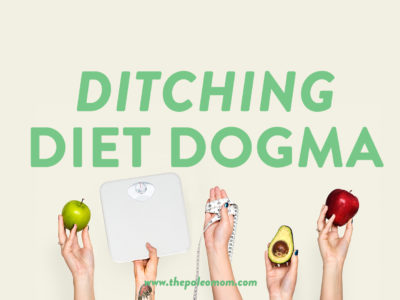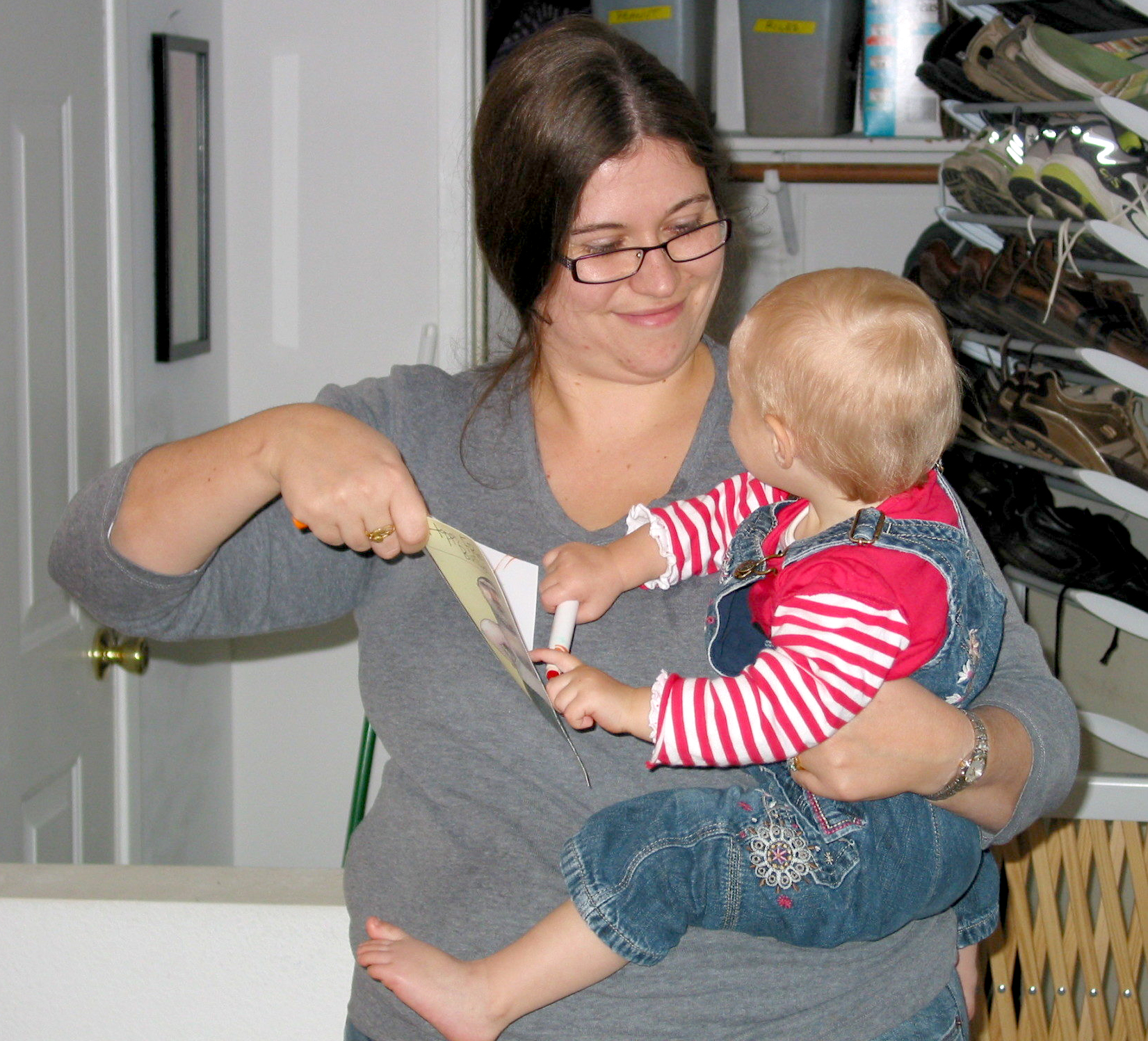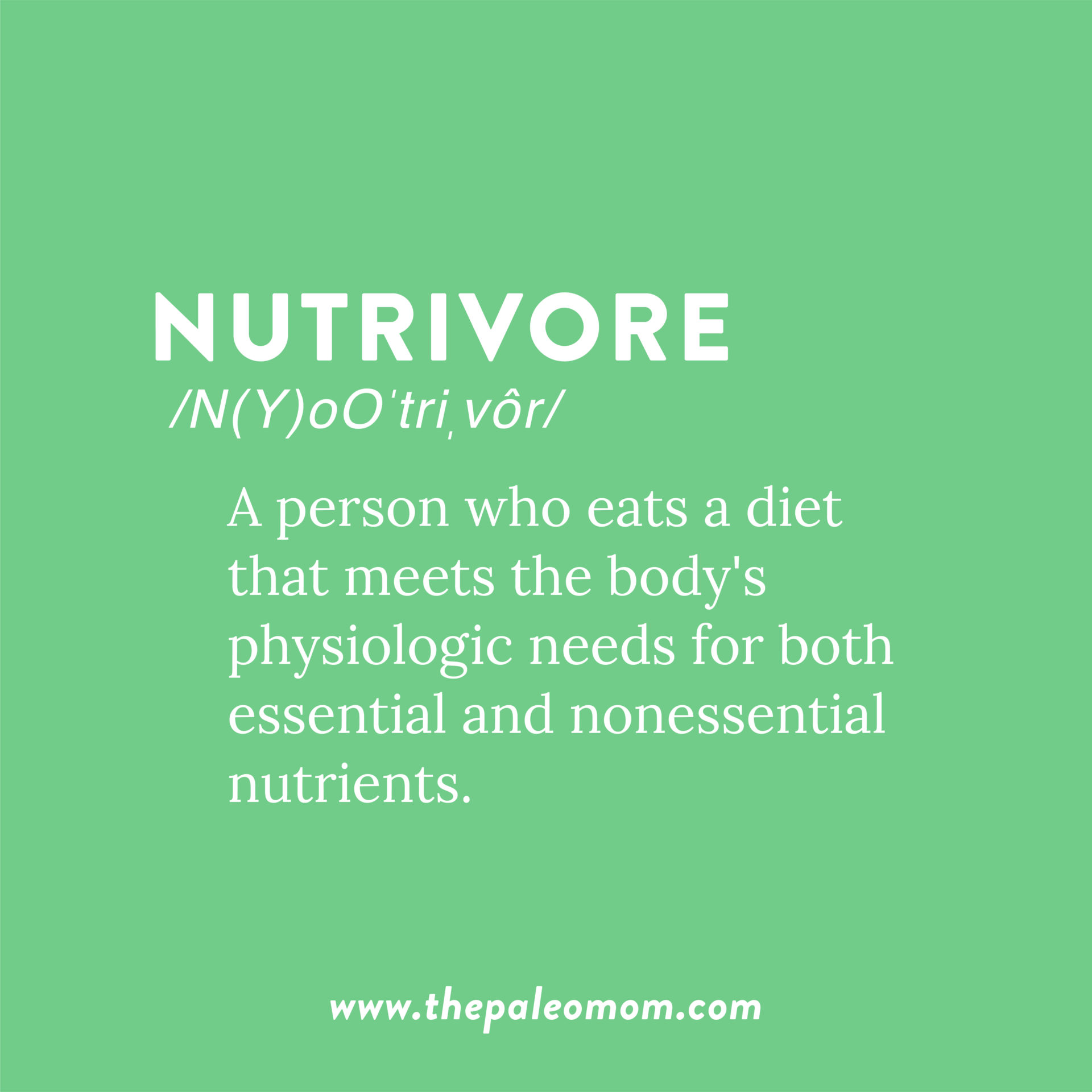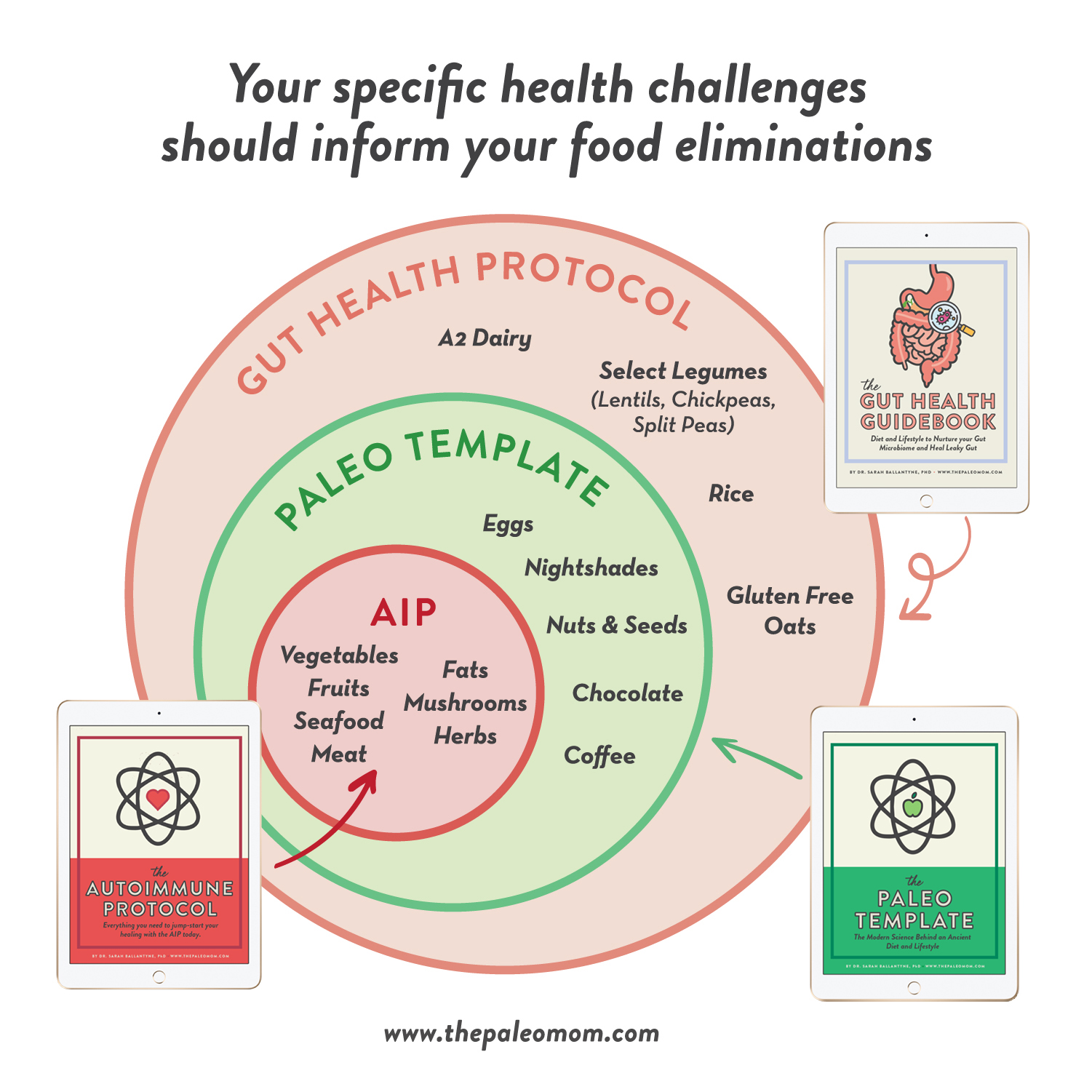Table of Contents[Hide][Show]
In the fall of 2014, a BBC documentary film crew spent most of two days filming in my home. The documentary followed its host, Giles, through a variety of immersive experiences with families following various diets and lifestyles purported to help extend life expectancy, including my family as one of several following the Paleo diet. In addition to lengthy interviews in my home, they followed me to drop my oldest daughter off at school, Giles worked out with me at my gym (100 slam balls for time, Rx!), they filmed me working at my treadmill desk, and I fed the whole crew a delicious pork roast dinner with baked apple, roasted sweet potatoes, bacon-braised Brussels sprouts, steamed broccoli and salad. I lent Giles a pair of amber-tinted glasses to wear in the evening, and he slept one night in our guest room. All-in-all, I felt that I represented the Paleo community well, demonstrating my balanced and holistic approach to wellness.
We were completely edited out of the documentary! I was initially disappointed but it turned out to be a great thing because the documentary did not portray any of the diets flatteringly. I said to my husband at the time, “huh, I guess we were too normal for them.” We didn’t fit the narrative. But, one memory from that experience has been bouncing around my head lately.
As the film crew was packing up and we were saying our goodbyes on the front porch, Giles said to me something to the effect of “You don’t ever say the word Paleo when you talk about what you eat.” Oh. I don’t? Huh. I guess I don’t.
I still don’t.
I realized that I was subconsciously avoiding labeling how we eat as “the Paleo diet”, not to escape the stigma associated with it as a “fad diet”, but rather to sidestep the diet dogma already so entrenched in the Paleo community.
Nutritional Sciences vs. Diet Dogma
Dogma is defined as a set of principles laid down by an authority as incontrovertibly true. While the Paleo diet has never had a central organizing body, it has always been policed by enthusiasts who follow as unyielding and irrevocable the yes-no food lists presented in any of the early Paleo books, websites or podcasts. When I posted my recipe for Simple Roasted Green Beans in December 2013, my social media was bombarded with comments all-caps yelling: DON’T YOU KNOW THAT GREEN BEANS ARE A LEGUME?!?! This recipe is sacrilege! (See The Green Bean Controversy and Pea-Gate).
While it may seem laughable now that green beans are commonplace in Paleo recipes, at the time I was rattled. Because it was the scientific foundation for the Paleo diet that originally attracted me to this way of life (my rapid health improvements inspired me to launch my website and create resources to help others), I was surprised to confront such a strong desire for a completely static template, unresponsive to new scientific insight, and an unwillingness to consider alternate interpretations of how to best implement the actionable information from scientific studies. Science isn’t static. As more research is performed, we expand human knowledge. Even our understanding of something as fundamental as gravity is continuing to expand. (Hello gravitational waves, proposed by Henri Poincaré in 1905, predicted mathematically by Albert Einstein in 1916, and finally measured for the first time by the LIGO detector in 2016!!!) A dietary template that follows the science must necessarily iterate and evolve to reflect the ever increasing sum of scientific evidence.
The green bean controversy was merely the first time of many that I have confronted Paleo diet dogma to the exclusion of science; I’m sure it won’t be the last.
While my ability to write about detailed scientific concepts in an engaging and accessible way is mostly innate, the skill set I use to research the topics I write about is one that I cultivated and refined during my prior career as a medical researcher. For years, I did research in critical care medicine (my two main projects were studying endogenous anti-inflammatory and antioxidant protective enzymes in the liver microvasculature during Systemic Inflammatory Response Syndrome, and stem cell-based gene therapy targeting angiogenic growth factors as a treatment for Acute Respiratory Distress Syndrome) and cell biology (I identified and characterized a new tumor suppressor gene involved in breast and colon cancer that prevents cell transformation via regulation of epithelial tight junctions). I got to use some super cool technologies in my experiments, my research won awards, and I have published in some of the top scientific journals.
Nutrivore Weekly Serving Matrix
An easy-to-use and flexible weekly checklist
to help you maximize nutrient-density.
The Weekly Serving Matrix is very helpful! I’ve been eating along these lines but this really helps me know where to focus vs. which foods serve a more secondary role. It’s super helpful and has taken a lot of worry out of my meal planning. Thanks!
Jan
But, my health was so bad when my first daughter was born that I took a leave from academia. During that time, I lost 120 pounds, found the Paleo diet, founded the Autoimmune Protocol, and finally regained my health after decades of struggles (see My Personal Journey with the Autoimmune Protocol). Through my blog, podcast, books, workshops and online courses, I found an audience hungry for my scientific explanations, which rely on contemporary biology rather than anthropology, for the why’s behind what to eat and what to avoid. My resources helped others regain their health too. And, as I earned my place as a thought-leader in the Paleo and community, my scientific approach helped reinforce the legitimacy of the Paleo diet while helping to define its contours. When my leave could no longer be extended after eight years, I decided not to return to medical research after all. I had found my calling as a science writer, health advocate, and educator. (Learn more about my background in Dr. Sarah Ballantyne, PhD and my story in Dr. Sarah’s Story).
My training as a scientific researcher has always permeated my approach to diet and lifestyle principles. I guess it’s once a scientist, always a scientist. My extensive experience of actually performing scientific research gives me an appreciation for the effort and passion that goes into scientific studies, as well as knowing the academic scientific research community intimately. It also allows me to read scientific papers with a strong knowledge base on the subject matter but also on experimental methodology and on statistical analysis (my B.Sc. is in honors physics so statistics and I go way back). That allows me to weigh the value of individual studies, identify methodological limitations and unanswered questions, and place them in the context of the research field as a whole.
That’s why you’ll never hear me saying BS like “that experiment was performed in mice so it has no relevance to humans” (if it’s a mechanistic study, which most animal experiments are, it’s immensely relevant to us because it explains why an effect happens), or “that human study has a small sample size so we should ignore the data” (statistical power is related to standard deviation and magnitude of effect, so you don’t always need a huge sample size to prove an effect). And, you’ll never hear me spout conspiracy theories, bash scientists as bias (99.9999% of them aren’t), or disregard a study just because it doesn’t confirm my beliefs. I’m completely open to new science challenging my conclusions and I will always let you know when new data changes the landscape with regards to a health topic.
I don’t look for studies that support my assertions, but instead I try to represent the current state of knowledge on that topic, if there’s enough data to reach scientific consensus (something I value immensely), otherwise where the majority of data is currently pointing, the limits of current human knowledge, where results need to be confirmed (and yes, we need more funding for confirmation and replication studies!), and where conflicting data indicates nuance and context. Despite my blog name, I don’t feel constrained by the term Paleo nor its diet dogma. I know my readers are well-equipped to fathom scientific evidence at odds with traditional Paleo tenets. Whether we collectively incorporate new scientific insight into the Paleo diet, or branch out towards a more inclusive dietary approach, I will always take the time to explain the scientific evidence behind every recommendation, so that your day-to-day choices can be empowered and informed by an appreciation for and understanding of the relevant science.
My Diet Label: Nutrivore
In July 2012, I posted (Re)Defining Paleo, where I discussed the importance of defining a diet based on what we do eat, and not what we eliminate. That’s because it’s not the foods we avoid that make a diet healthy or unhealthy, but rather what we actually consume. And, the most fundamental property of a health-promoting diet is one that supplies the body with all of the nutrients it needs to function optimally.
Over the years, I’ve come to resonate with a different label for the way I eat. I think of myself as a nutrivore.
A nutrivorous diet is one in which the goal is to fully meet the body’s physiologic needs for both essential and nonessential nutrients from the foods we eat. This is also called a nutrient-sufficient diet.
Every cell, tissue, organ, and system in the human body needs specific amounts of specific nutrients in order to function efficiently and effectively. Nutrients are used not only in the formation the components of our bodies but also in the millions of chemical reactions that occur in our bodies in every moment. We are made of nutrients and our bodies need them to do even basic things like breathing. Every tiny detail of every function of every part of the human body requires nutrients, and it isn’t just macronutrients—protein, fat, and carbohydrates—that supply the energy that fuels the complex functions of life. Micronutrients—vitamins, minerals, plant phytochemicals, and other compounds—are necessary resources that get used up, too, and our micronutrient stores must be continuously topped up from the foods we eat. Being even slightly deficient in a single nutrient can have negative consequences for our health.
Micronutrients can be categorized as essential and nonessential. Essential means that you’ll die without them. Nonessential means that you’ll go on living without them, though you may not be particularly healthy—and indeed, many micronutrients that are considered nonessential are known to improve health. Often, micronutrients are called nonessential simply because we don’t really understand exactly what it does in our bodies to support health—we just know that when we consume more of it, our risk of disease decreases. This is the case for most phytochemicals (like polyphenols) and many vitaminlike compounds (like coenzyme Q10). There are thousands of plant phytochemicals, and our understanding of their roles in health is so rudimentary that the most we can typically say about them is that they have antioxidant activity (that is, they help prevent damage to molecules in our body from oxidation). Yet we know that the more plant phytochemicals in your diet, the lower your risk of chronic disease. When you think about it in these terms, it’s easy to realize that even nonessential nutrients are pretty darned important.
The term nutrient density refers to the concentration of micronutrients (mainly vitamins and minerals, but the term micronutrients also encompasses phytochemicals, essential fatty acids and essential amino acids) per calorie of food. Nutrient-dense foods supply a wide range of vitamins and minerals (or alternatively, high levels of a specific, important vitamin or mineral) relative to the calories they contain, whereas low nutrient density foods supply lots of energy without much in the way of additional nutrition. Thus, a nutrivorous, or nutrient-sufficient, diet is practically achieved by consuming more nutrient-dense foods, in ratios that provide synergistic quantities of every nutrient.
When we consider the foods richest in micronutrients, certain foods come up again and again as powerhouses of nutrition, especially: organ meat, seafood, vegetables, mushrooms, fruit, nuts, seeds, herbs and spices. Yes, that certainly looks a lot like the Paleo diet (at least how I’ve defined and implemented it over the last 8+ years). So, what’s the difference between Paleo and nutrivore? Being a nutrivore is about the overall quality of the whole diet, and not about a list of yes-foods and no-foods. Even though eliminating empty calorie foods helps to achieve nutrient sufficiency, no food is strictly verboten.
Being a nutrivore is integrated into the Autoimmune Protocol (in addition to eliminations recognizing the importance of removing dietary autoimmune triggers for susceptible individuals, and lifestyle factors important for immune regulation), and you can certainly be a nutrivore while following the Paleo diet (although in Paleo’s case, nutrient-sufficiency is not baked in), which is how my family and I eat in practice. I think of being a nutrivore as a general health approach, a base dietary philosophy devoid of dogma, on top of which you can layer additional food focus or eliminations to meet individual needs.
The Gut Microbiome Diet
I recently released my new gut microbiome e-book, The Gut Health Guidebook, the culmination of nearly six years of intense research and writing. An even longer, more detailed version is in the works for an upcoming in-print book that was delayed due to covid-19.
When I decided to wade into the scientific literature on the gut microbiome, and specifically the intersection between diet and lifestyle and supporting a healthy and happy our community of gut microbes, I decided the only way to do this right was to leave all of my previously established conclusions about which foods are good or bad at the door. No dogma allowed! Instead, this field of research presented a new opportunity to understand which foods are healthful or harmful in a new light, perhaps finally answering many lingering questions about gray-area foods for which the Paleo community if often criticized for omitting.
As I read and learned and compiled information, I started to see every health-promoting food and behavior through the lens of the microbiome. Everything I already knew was healthy was confirmed, and the benefits largely mediated through the gut microbiome. Everything I already knew was unhealthy was confirmed, and the detriments largely mediated through the gut microbiome. And that world of gray in between solidified into black or white, which is why foods traditionally excluded on the Paleo diet made their way into The Gut Health Guidebook as beneficial for the gut microbiome.
I set out not to make another Paleo book or AIP book, but instead, simply to understand the current state of scientific evidence on optimal diet and lifestyle for the gut microbiome, digging deep into the literature for hidden gems (of which I found many). And, I think this information helps to align the Paleo diet with other scientifically-validated dietary approaches, shedding light on limitations of diets devised without the gut microbiome in mind. This information explains why the Autoimmune Protocol is so powerful (the main takeaways from my gut microbiome research have already been integrated into the AIP over the past few years), but also expands on it in an informed way for people who aren’t challenged with autoimmune disease.
In The Gut Health Guidebook, I’ve build a new diet for general health, from the ground up, based on the gut microbiome, that merges everything the science currently tells us is healthful into one comprehensive approach.
Guess what diet most closely aligns with the gut microbiome diet? Yep, nutrivore. The Autoimmune Protocol diet and a nutrient-sufficient Paleo diet are close seconds. In fact, in the process of compiling this information, I have come to view AIP and Paleo as two different sub-diets of a nutrivore or a gut microbiome diet, those aforementioned layers on top of a nutrient-sufficient base that help refine a diet to respect bioindividuality and help address personal health needs and goals.
So, I hope you’ll follow me down the rabbit hole of the gut microbiome in The Gut Health Guidebook, being open to new information that challenges diet dogma, and raring to adopt new habits to support optimal health.
I also have a companion e-cookbook coming late this summer, which you can pre-order to get the lowest price as part of The Gut Health Collection.
This companion to The Gut Health Guidebook puts theory into practice with 150+ recipes that each center on at least one of 60 gut health superfood ingredients. The Gut Health Cookbook is organized by gut health superfood, including a summary of each superfood’s benefits to overall health and the gut microbiome, followed by 2 to 4 recipes that highlight that ingredient and pair it with other superfoods. From reimagined decadent desserts to wholesome breakfasts to one-pot meals, this e-book is designed to show you just how easy and delicious eating for your gut microbiome can be! While some of the featured gut microbiome superfoods are not traditionally considered Paleo (like lentils and rice), all of the recipes are gluten-free, approximately 90% are Paleo and more than half are AIP compatible. And, for those of you who have all of my e-books and cookbooks, at least half of the recipes in The Gut Health Cookbook are completely new!

















